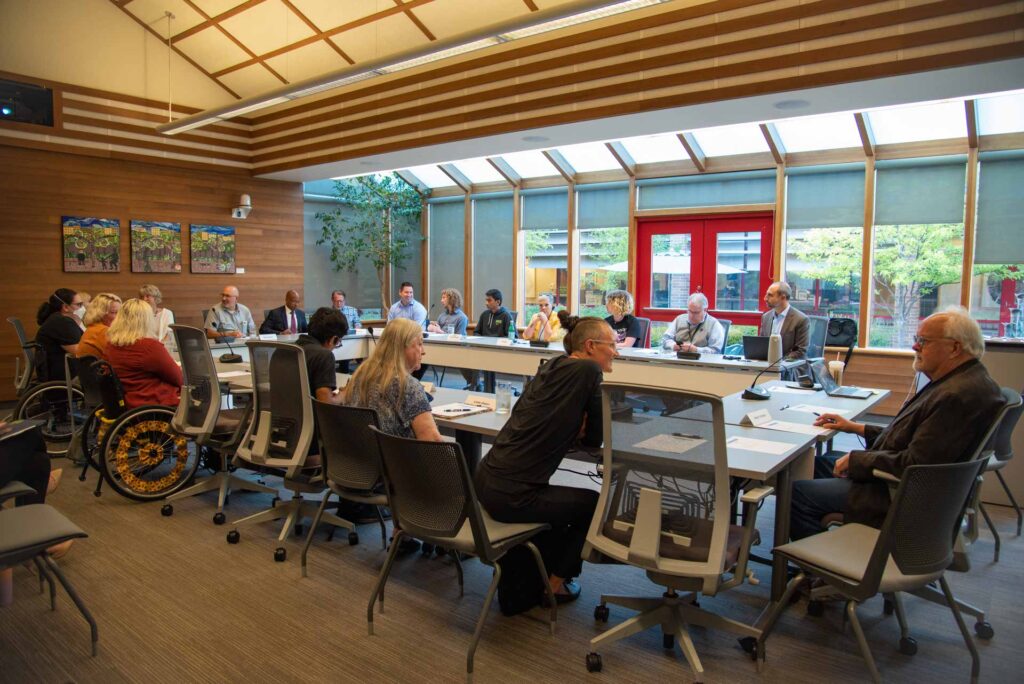Community Outreach and Communications Assessment (COCA)
Date Created:
March 2023

Related Documents & Board Actions
Developed in 2024 by a Community Steering Council and public input, the Community Outreach Framework established guiding principles, essential practices, strategies and tactics for effective community engagement.
Community Engagement
Guided by the Community Outreach Framework, LTD is committed to transparent, meaningful, accessible community engagement around its projects, policies, and programs.
Guiding Principles of Engagement
Style
The approaches LTD uses to engage with the public
Content
The type of information provided to the public
Process
The methodology used in public engagement
Intent
The goals of public engagement
Essential Practices
At a minimum, the baseline standard of engagement requires:
- Understanding the demographics of both Lane County and LTD riders
- Using a stakeholder mapping exercise to think through how the interests, influence, and needs of various stakeholders may differ,
- Developing a tailored approach to engagement that is supportive of these varying needs.
The purpose of stakeholder mapping is to think through how the interests, influence, and needs of various stakeholders may differ and require tailored engagement strategies and tools. Understanding demographics and conducting stakeholder mapping should be followed by considering the varying needs of those stakeholders. The practice entails considering what targeted outreach or strategy may be needed based on differing needs, addressing questions of purpose, assumptions, and inclusion.
Strategies & Tactics
Priority Strategies & Tactics
Engage Government Stakeholders
Engaging early and often with other government agencies, especially cities, could drive more positive outcomes for overall LTD engagement.
Get Out Ahead of the Story
LTD should diligently pursue earned media and push their message in the community long before a project begins.
Be Present with Riders
Riding the system, talking to people, and getting regular feedback will bring LTD top of mind in the community and demonstrate commitment to the public.
Engage Potential Opposition
Opposition can be effectively managed by building and maintaining relationships and trust among those who might be most likely to oppose any given project or initiative. Giving people advance notice, asking for their genuine feedback and what it would take to get them to support the project, and keeping them in the loop throughout the process can go a long way towards minimizing challenges.
Work to Build Trust
The greater the reservoir of trust between LTD and the community, the more effective everyone will be in achieving their goals.
Engage in Collaborative, Honest, and Transparent Conversations
LTD will focus on creating meaningful engagements where they promote transparency and collaboration.
Communicate Clearly What People Need to Hear
LTD will communicate consistently and clearly but will also focus on telling people what they need to hear. This means more than just basic information about an initiative but also explaining why things are being done, dealing with misinformation, and educating people about everything LTD does.
Focus on Riders
LTD must focus on its core mission when it conducts outreach. The core service LTD provides is primarily intended to benefit its riders. The rest of the community must also be included (see above) but present and future riders should be the focus.


